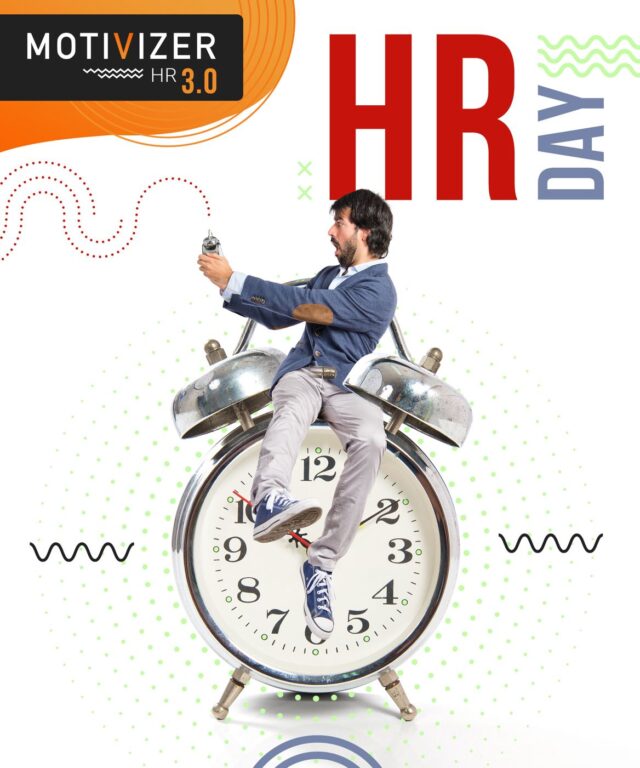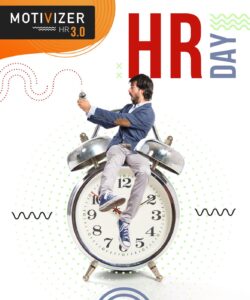Top 10 books that every HR professional should know

Benjamin Franklin was fond of saying that investing in knowledge always yields the greatest returns. That’s why we would like to recommend 10 books today that can change not only your perspective on HR, but also your view of the world and your place in it. The order is random
“Benjamin Franklin’s Investment in Knowledge Brings Greatest Profits”
The top 10 books every HR specialist should know for HR Day:
1. Walter Isaacson– „Steve Jobs”
Exclusive biography of Apple co-founder Steve Jobs, written with his cooperation by Walter Isaacson, author of best-selling biographies of Benjamin Franklin and Albert Einstein.
Drawing from over 40 conversations with Jobs conducted over two years and interviews with over 100 individuals including family, friends, foes, competitors, and colleagues, Isaacson delivers an engaging story of the life and fiery personality of this visionary entrepreneur, whose passion and perfectionism revolutionized six industries: personal computing, animated films, music, phones, tablets, and digital publishing.
In a world striving to build a digital economy, Jobs remains the most distinctive icon of innovation and imagination shaping reality. Believing that the best way to create value in the 21st century is to integrate creativity with technology, he founded a company where unrestrained vision combined with stunning technological achievements.
Driven by inner demons, Jobs could drive those around him to fury and despair. But his dynamic personality and the products he created were intimately linked, functioning like one integrated organism, just as Apple’s hardware and software layers do. The imaginative story of Jobs shows the importance of creativity, character strength, leadership talent, and commitment to values in life.
2. “Lego: How to Overcome a Crisis, Rewrite the World and Build Power with Blocks?” by Niels Lunde
Brand. Block. Construction system. Community. These are the four pillars of one of the most well-known companies in the world. A company that has been inspiring the imaginations of children and adults alike for over eight decades. This is the story of Lego – an idea that had to be born again.
Have you ever wondered what lies behind the success of one of the most popular toys from your childhood? Or are you still a fan of constructing and expanding your creativity? This extraordinary case study reveals all the secrets of the Lego brand’s success.
Today, Lego is a highly functioning corporation with success all around the world. However, few people realize that in 1978, the fate of this exceptional company could have turned out quite differently. It was in that year that the young idealist and grandson of the founder of Lego, Kjeld Kirk Kristiansen, took the helm of the company.
Over 300 pages, we meet the greatest managers and financial directors of the second half of the 20th century, each trying to break and understand the essence of the most famous building block of all time. We witness dramatic decisions and events that led this Danish national treasure to the brink of sale and downfall. Finally, we meet Jørgen Vig Knudstorp, who decided to rekindle the spirit of Lego and, tracing a huge circle, to restore some of the values that Kjeld Kirk Kristiansen cherished, and which are still so dear to all fans of this wonderful toy.
3. “When the Rule is No Rules. Netflix and the Philosophy of Transformation” by Hastings Reed and Meyer Erin
It’s time for change, be completely honest, remember that a company is a team, not a family, never, ever try to please your boss. These are some of the basic rules that apply to Netflix employees. The operation of this company is a cultural experiment that ended in a spectacular success: a company that deals with the rental of DVD discs by mail became a streaming powerhouse. It now has 182 million subscribers and a market capitalization on par with Disney.
Reed Hastings – CEO and CEO of Netflix – shares his secrets for the first time that revolutionized the entertainment and technology industry. Together with Erin Meyer, professor at INSEAD Business School, he reveals his leadership philosophy that rejects the beliefs held by most companies. From unlimited vacations to the abolition of approving employee expenses – Netflix is a completely different way of running an organization that is best suited to a changing world. “When the rule is no rules” is an inspiration for change for all who seek sources of productivity, creativity, and innovation.
4. Patty McCord – “Powerful: Building a Culture of Freedom and Responsibility”
Managing talent is not easy. Get to know Powerful and see concrete examples of actions and best practices. Start shaping the organizational culture of your company consciously today. This book is not easy to find, but if one of your friends has it, do everything you can to borrow it and read it. The book will help you understand why the key to business success is full understanding by all employees of business goals, with complete transparency within the organization. For employees, it’s not fruit Thursdays and gym memberships that are most important, but the opportunity to get to know themselves and break down barriers. Patty McCord, former Chief Talent Officer at Netflix, will show you how to bring out the best in yourself and others.
5. “First, Break All the Rules: What the World’s Greatest Managers Do Differently” by Coffman Curt and Buckingham Marcus
This book has topped bestseller lists from the Financial Times to Amazon.com in the United States. Based on extensive empirical material collected by the authors while conducting research at Gallup, the book shows that there is something that connects all successful managers – flexibility in approach to situations and people, breaking and crossing established rules. The book proposes a management model that will allow for the introduction of changes that are decisive for success, increase the creativity of employees and customer satisfaction, and achieve better profits.
Introduction:
“In this book, we give voice to a million employees and eighty thousand managers. This staggering number of conversations allowed us to stay grounded in reality. At first, it was hard to even imagine what could be heard from a talented employee or an outstanding manager. (…) We know, as do you, that contemporary life is full of constant changes. We know that the work atmosphere is changing and that new approaches to management are appearing and disappearing. By listening to managers like Michael and the employees they lead, we tried to extract something that does not change. What will always be needed for talented employees? What will great managers always do to turn talent into action? What are the unchanging secrets of finding talented employees, getting them focused on the right goal, and keeping them around for a long time? What remains unchanged? These were the questions we asked ourselves at the beginning. And on the next pages of this book, we will present the conclusions we have reached.”
6. Masaki Imai – “Kaizen: The Key to Japan’s Competitive Success”
This is the world’s first book to introduce kaizen – a Japanese management philosophy based on continuous improvement – to Western managers.
The release of this book was a milestone in the theory of management, particularly in quality systems. For the author, it was the beginning of a mission to popularize and adapt kaizen in Western companies. A mission that faced the challenge of the differences in mentality between Japan and the West. As we read in the preface: “(…) Western managers prefer sudden changes based on technology and significant investments, while the Japanese prefer to continually improve processes with small steps, relying on common sense and employee engagement (…). The author calls these two different approaches innovation and kaizen. The challenge that he presents to managers is to adopt both. Only the synergy of innovation and kaizen conditions achieving lasting success.
Kaizen cannot be understood through book learning. True learning comes from daily practice in this field. Before embarking on the path of kaizen, the reader has the opportunity to get to know the practical side of management in the system of continuous improvement through numerous case studies of the implementation and functioning of kaizen in Japanese companies.
7. Armstrong Michael, Taylor Stephen – “Human Resource Management” Bible HR.
The textbook by Michael Armstrong and Stephen Taylor is a key reference in the field of human resource management. The authors describe all the key areas of this discipline, such as recruitment, human capital management, compensation, employee engagement, personnel policy, safety and health, and the impact of human resource management on organizational results.
Each chapter lists the key concepts and terms in HRM and poses questions that allow both students and practitioners to verify their knowledge.
8. “How Does Google Work?” by Eric Schmidt, Jonathan Rosenberg and Alana Eagle
How Does Google Work?” by Eric Schmidt, Jonathan Rosenberg and Alana Eagle is a humor-filled book in which Eric Schmidt (CEO of Google) and Jonathan Rosenberg (advisor to Larry Page) share their knowledge and experience gained while transforming the company from an academic start-up to a global corporation, using advanced artificial intelligence. It is an exciting read full of anecdotes and interesting facts, on the one hand, it perfectly documents the workings of one of the most innovative companies in the world, on the other hand, it is an indispensable guide for every manager on how to succeed in the age of the internet and new technologies. “How Does Google Work?” covers topics such as organizational culture in the company, strategy, decision making, communication, crisis situations, talents and innovation.
What sets Google apart from other businesses? What is the secret of its success? How can you use the methods developed in this company to develop your own business? You will find out about these and many other incredibly interesting aspects of Google’s functioning from the international bestseller “How Does Google Work” written by the people who know it best, for obvious reasons.
9. Daniel Kahneman – “Thinking, Fast and Slow”
Are people the conscious and autonomous authors of their own choices and judgments? Can they trust their own thinking, especially the quick, intuitive, and emotional one? It is probably safer to rely on slow, analytical thinking. Yet it is difficult to avoid thinking traps. This happens even to economists and does not favor making accurate decisions…
In this groundbreaking book, psychologist and Nobel Prize winner in economics Daniel Kahneman explores these issues and provides important insight into the mechanisms of human thinking.
This is a revolutionary book. Kahneman explains the workings of the mind and describes how our thinking is jointly determined by two systems: System 1 – quick, intuitive, and emotional and System 2 – slower, more deliberate and logical. Kahneman reveals the incredible possibilities – but also the errors and shortcomings – of quick thinking, indicating the pervasive influence of intuitive impressions on our thoughts and behaviors.
This book sheds new light on many important issues. What significance does our aversion to losses and overconfidence have for our business strategies? Why is it so difficult to predict what will make us happy in the future? Where do difficulties arise in objectively evaluating risks in work and daily life? What mental errors influence our decisions when investing in the stock market or planning vacations? These questions cannot be answered without knowing how both systems shape our judgments and decisions.
10. “When: The Scientific Secrets of Perfect Timing” by Daniel H. Pink
“When: The Scientific Secrets of Perfect Timing” by Daniel H. Pink is a book that reveals effective ways of managing time, which if used skillfully, can greatly improve your achievements at work, school, and home. All of us struggle with the constant stream of dilemmas inherent in the simple but important word “when”. When to change jobs? When to plan activities? When to get involved in a relationship or project? These decisions are usually made on a whim, relying on intuition, feelings, or just guessing. This is a completely wrong approach, argues Daniel Pink.
In common perception, timing is extremely important, but hitting the right moment is treated as an art. From Pink’s arguments, it is clear that managing time is actually a science. Drawing extensively on the findings of psychologists, biologists, neurobiologists, and economists, the author of “When” reveals and advises how to better live, work more efficiently, and succeed by understanding the secrets of timing. How to use hidden day patterns in planning? How can breaks dramatically improve the results of tests written by our children? How to turn a bad start into a new start? Why are halfway marks important? Why do endings increase motivation and deepen meaning? And finally, how to make time your ally rather than your enemy?
From the answers to these and many other questions, Pink creates a fascinating narrative full of intriguing stories and practical advice. Unexpected results of innovative research, bold ideas, and unconventional explanations make this book change the way we think about the past, present, and future.
Author:
Paweł Filutowski, CEO/CTO Motivizer
Recent Posts:
- Capital24.tv Debate with Piotr Dubno – “Economy, Innovation, Investments. What Changes Await Us?
- The future of HR – what will be the key to organizational success?
- Are you keeping up with the idea of a modern workplace?
- Burnout, how can an employer help an employee?
- Digitalization of HR is key to unlocking the full potential of an organization

